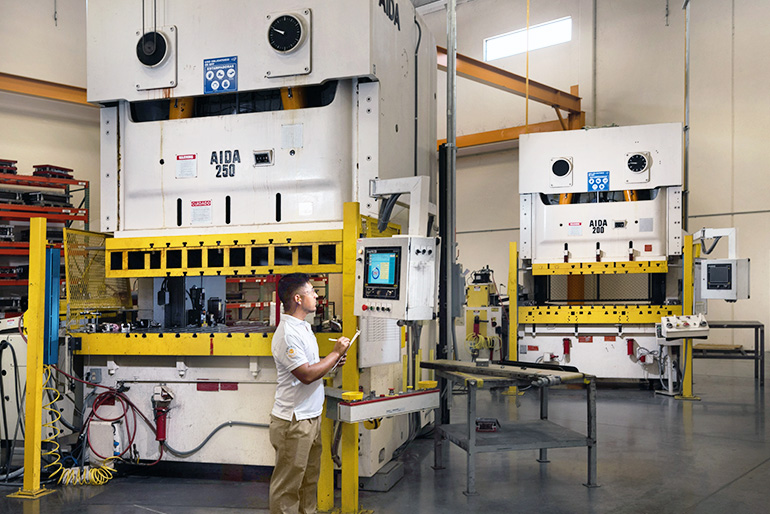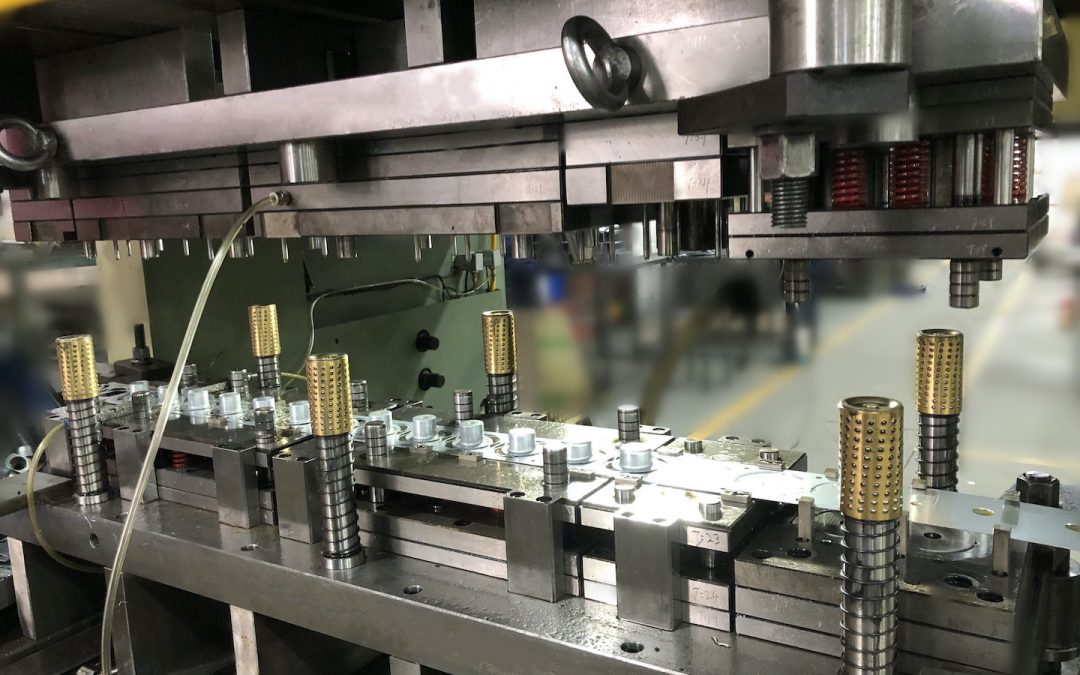Discover the most recent Innovations in Metal Stamping for Precision Manufacturing
Discover the most recent Innovations in Metal Stamping for Precision Manufacturing
Blog Article
Advanced Techniques in Steel Stamping for Precision Manufacturing
As markets constantly require better tolerances and complex layouts in their metal elements, the pursuit for advanced methods in steel stamping has heightened. From the application of sophisticated multi-stage stamping processes to the integration of innovative automation technologies, the landscape of metal stamping is undergoing a profound makeover.
Advanced Multi-Stage Stamping Processes
Talking about the ins and outs of innovative multi-stage stamping processes reveals the advanced strategies used in modern-day production techniques. Metal Stamping. Multi-stage stamping is a complicated process that entails several actions to transform a flat sheet of steel right into a last stamped item. The usage of progressive dies, where different operations are carried out at each stage of the stamping procedure, enables high precision and efficiency in the manufacturing of intricate metal parts
During the initial stages of multi-stage stamping, the flat metal sheet is fed into the stamping press, where a collection of passes away are used to cut and form the material. Subsequent stages entail added creating, flexing, and punching procedures to additional fine-tune the component. Each phase is thoroughly developed to build on the previous one, resulting in the development of complex geometries with tight tolerances.
Advanced multi-stage marking procedures need a high level of knowledge and precision to make certain the quality and uniformity of the stamped components. By using sophisticated equipment and tooling, suppliers can produce a wide variety of steel components with efficiency and precision.
Accuracy Tooling Innovations
Precision tooling innovations have actually revolutionized the metal marking industry, improving efficiency and top quality in manufacturing processes. CNC systems enable for detailed designs to be equated directly into tooling, ensuring accuracy and repeatability in the marking process.
Moreover, the assimilation of sensing units and real-time monitoring abilities in precision tooling has actually enabled producers to find and resolve problems immediately, minimizing downtime and decreasing scrap rates. By integrating wise innovation right into tooling, drivers can optimize specifications such as stress, speed, and alignment during the stamping operation, resulting in boosted item top quality and raised productivity.

Automation in Metal Stamping
The development of precision tooling developments in the steel stamping market has led the way for substantial developments in automation, changing the production landscape towards enhanced efficiency and productivity. Metal Stamping. Automation in steel stamping involves making use of innovative equipment and robotics to carry out various jobs commonly performed by human drivers. This change towards automation offers countless benefits, including enhanced accuracy, faster manufacturing cycles, and decreased labor costs
One trick element of automation in steel marking is the implementation of computer system mathematical control (CNC) systems, which allow precise control over the marking process. CNC technology enables the creation of complex and complex metal parts with constant quality. Furthermore, automated systems can be programmed to run continually, resulting in higher outcome prices and much shorter preparations.
Moreover, automation improves work environment safety and security by decreasing hands-on handling of hefty materials and decreasing the risk of check here mishaps (Metal Stamping). As making markets proceed to embrace automation, the future of metal marking holds terrific assurance for even greater effectiveness and technology
High-Speed Stamping Techniques

Among the key advantages of high-speed marking strategies is the ability to try this website generate a big volume of components in a much shorter quantity of time contrasted to traditional stamping methods. This enhanced efficiency not just permits suppliers to fulfill limited manufacturing target dates yet additionally allows price financial savings with economies of scale. Additionally, high-speed marking can aid minimize product waste by enhancing the material use throughout the marking process.
Furthermore, high-speed stamping methods frequently integrate innovative functions such as quick die adjustment systems and real-time surveillance capacities, additionally boosting the overall effectiveness and flexibility of the metal stamping process. As technology remains to breakthrough, high-speed marking is expected to play an important role in driving the future of accuracy production.
High Quality Control in Stamping Operations
Reliable high quality control steps are essential for ensuring the reliability and uniformity of steel stamping procedures. Quality control in marking operations includes a series of methodical processes focused on detecting and protecting against problems in the produced elements. One critical element of quality control in steel stamping is the use of innovative assessment methods such as optical examination systems and coordinate determining equipments (CMMs) to confirm the measurements and tolerances of stamped parts.
Furthermore, quality assurance actions in stamping operations usually include the application of analytical process control (SPC) methods to keep track of the production procedure in real-time and ensure that it remains within acceptable limitations. By check here evaluating data and determining patterns, suppliers can proactively resolve any type of discrepancies from the preferred high quality requirements.
In addition, top quality control in steel stamping procedures additionally includes extensive product screening to guarantee that the raw materials utilized satisfy the called for specifications for the stamping process. This might consist of performing product solidity examinations, tensile stamina tests, and dimensional assessments to ensure the top quality and integrity of the stamped parts. Generally, carrying out robust quality assurance actions is vital for attaining top quality stamped parts regularly.
Final Thought
To conclude, advanced techniques in metal stamping play an important function in precision manufacturing procedures. Via multi-stage marking procedures, ingenious tooling remedies, automation, high-speed strategies, and extensive quality assurance steps, producers can accomplish higher levels of accuracy and performance in their procedures. These improvements in metal stamping technology have actually enabled business to create complex components with limited tolerances, inevitably bring about boosted product quality and consumer fulfillment in the manufacturing sector.
Report this page